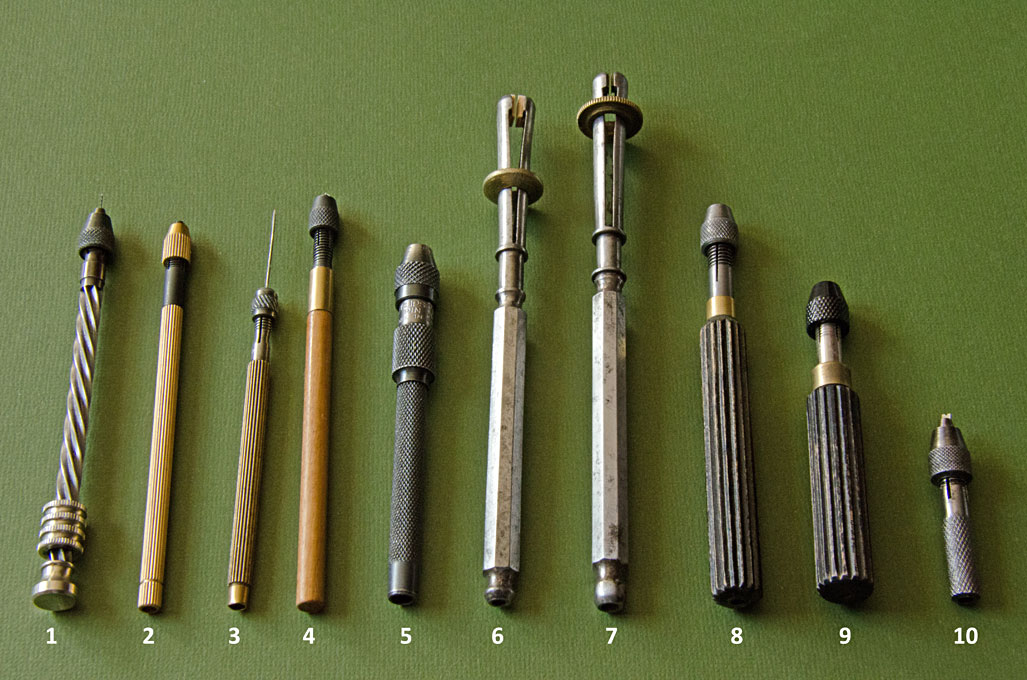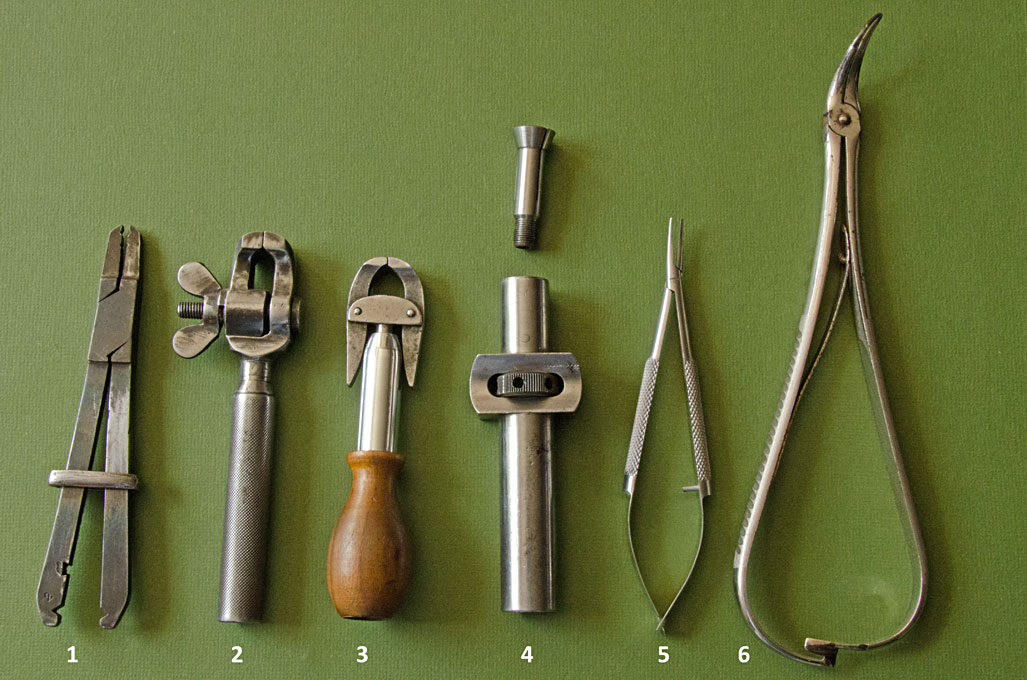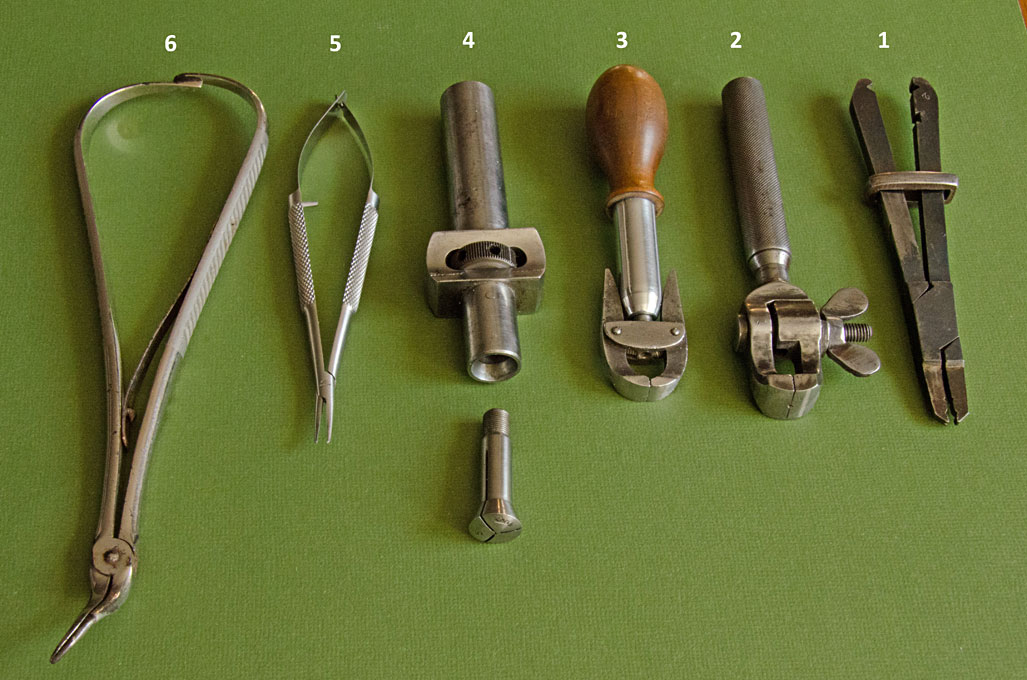2 - Slender modern pin-vice with hollow fluted brass body.
3 - Slender antique pin-vice with hollow fluted brass body.
4 - Shop-made pin-vice with walnut body and head made from an insert drill-chuck; these drill-chucks are unfit for their intended purpose as they usually do not run true.
5 - Eclipse toolmaker's pin-vice with knurled steel body; these come in different sizes.
6 - French-style pin-vice; these are closed with the sliding ring and have usually brass inserts in the two jaws that can be adapted to special needs;
7 - Dito, here the jaws are replaced in hard-wood for delicate parts.
8 - Antique laboratory pin-vice with fluted wooden handle.
9 - Modern pin-vice with fluted wooden handle; these come in different sizes and capacities.
10 - Antique toolmaker's pin-vice for very delicate work in confined spaces.
1 - Toolmaker's hand-held vice that is closed with a sliding ring.
2 - Hand-vice with parallel serrated jaws moved by a screw.
3 - Antique american style hand-vice; the jaws are closed by screwing in the conical body; the handle and body have been replaced.
4 - Hand-held collet-holder; this uses horological lathe collets; the advantage is that work can be transferred between the holder and the lathe when it has the nominal collet diameter.
5 - Castrovejo surgical non-locking needle-holder; they come in various sizes, this has medium tips for eye-surgery.
6 - Antique surgical locking needle-holder; these come in a wide variety of sizes and shapes.
A selection of Castrovejo eye-surgery tools:
1 - fine-pointed non-locking needle-holder with straight smooth tips
2 - fine-pointed locking needle-holder with smooth tips
3 - fine-pointed blade-breaker - this are used to break off pieces from razor-blades to be used a very sharp scalpels
4 - very fine-pointed tweezers - they are stiffer and less springy than the typical watchmakers or biological tweezers
5 - medium-pointed non-locking needle-holder with curved smooth tips
I had been looking for this kind of watchmakers bench-vice for a long time, but they are very expensive, both new and second-hand. Got a good deal on this and it came with the mounting plate. Notable suppliers are Bergeon and Leinen. This plate normally is set into the workbench to allow the vice to be easily removed. However, I wanted to be able to move it around the bench for a variety of light filing and holding duties. The jaws are smooth, 40 mm wide and hardened, of course. These precision vices are very well constructed with a covered spindle, so that that chips cannot get onto the thread.
I happen to have a cast-iron stand for such a vice for a long time, but converted it to a swivveling base for models. Until I'll find another suitable cast-iron base, I knocked up a wooden base for the vice from rests.
Homepage Besucherzähler







